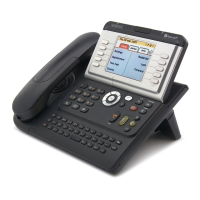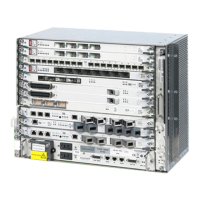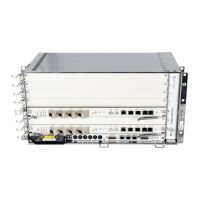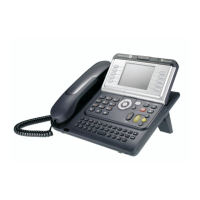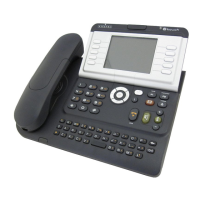OmniPCX Enterprise
APPENDIX 2
REMARKS & RESTRICTIONS
INSTALLATION PROCEDURE FOR VERSION
J1.410.34.c – RELEASE 10.0
TC1449 6 Ed. 02 / 22 June 2011
− NAT/PAT is globally not compatible with the different elements of the system (e-CS, GD, IP-
Phones).
− Pre-login (V120).
• Since Release R5.1, the path for the pre_login is different from the previous Unix versions.
Pre_login is now located under DHS3bin/servers or usr2/servers.
− "Ensure database consistency" (introduced in R9.1).
This feature is intended for cases where MAO modifications are done while the Stand-By is
temporarily not present.
The Double main Call Servers case is specific: MAO messages may be stored in the buffer of
both Call Servers. When the duplication link is back operational, if there are stored messages in
the Call Server which reboots as Stand-By (independently of the fact messages may have been
stored or not in the Call Server which stays Main), then they are lost (on both Call Servers) and
an incident 439 is displayed to recommend a manual synchronization (mastercopy). If messages
have been stored only in the Call Server which stays Main, then they will be sent to the Stand-By
after its reboot.
Currently the MAO storage has two limitations: the buffer can store only 255 messages and the
storing process cannot last more than two hours. In the patch I1.605.14.e, MAO messages are
stored directly in RAM, removing the buffer limitation.
2. COMMUNICATION SERVERS
2.1. Call Server CPU
− Direct connectivity of the Ethernet port of the CS to a port of a switch is mandatory.
− Only auto-negotiation mode is supported on the CS board => to be able to operate in Full-
duplex, the port of the switch used for the connection must be configured in auto-
negotiation. Otherwise, if the port of the switch is forced to full-duplex, the CS will be unable to
detect the full-duplex capability of the switch port and will operate in half-duplex. Rule: the port
of the switch must be in auto-negotiation or forced to half-duplex.
− Protection against high broadcast traffic: available on CPU-CS (an incident is emitted) but it is
not manageable.
− As of Release 8.0, CPU-CS boards must be equipped with 256 MB RAM:
References: Single SDRAM 256 MB: 3EH 75056 AA
CPU-CS board equipped with 256 MB RAM: 3EH 73048 BB
− As of Release 9.0, CS-2 boards offer Ethernet redundancy with load balancing.
Pay attention that the Actis rules regarding this board change with Release 9.1 (Actis 14.1). In
Release 9.0, the rules were the same as for CPU-CS board, except that for system with more than
5000 users (physical sets), the PCS of a branch office was no more restricted to an Appliance
Server but could also be a CS-2 board. In Release 9.1 / Actis 14.1, the rules are modified in
order to fully benefit from the CS-2 board performances.
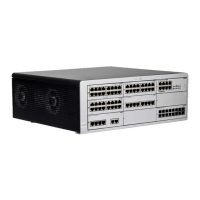
